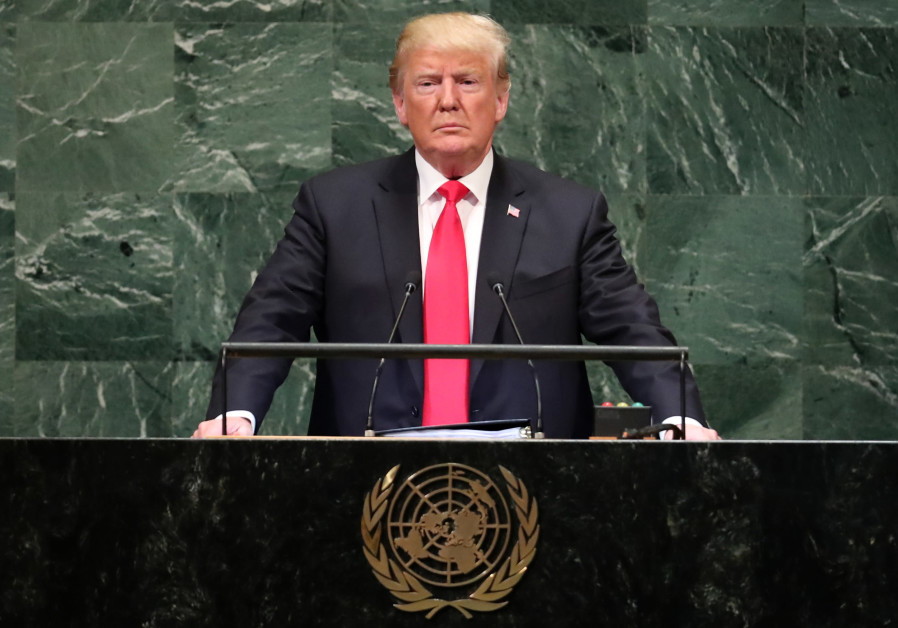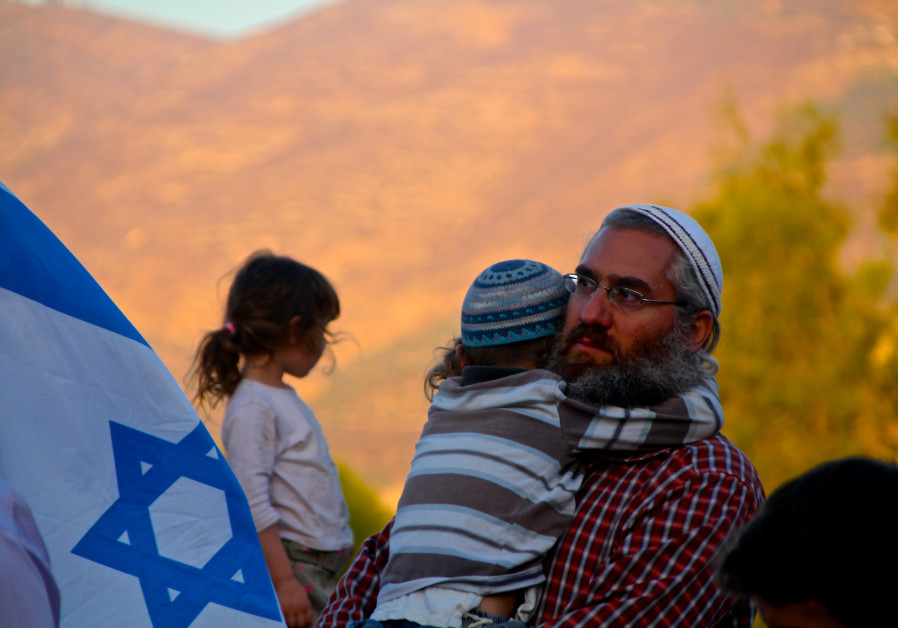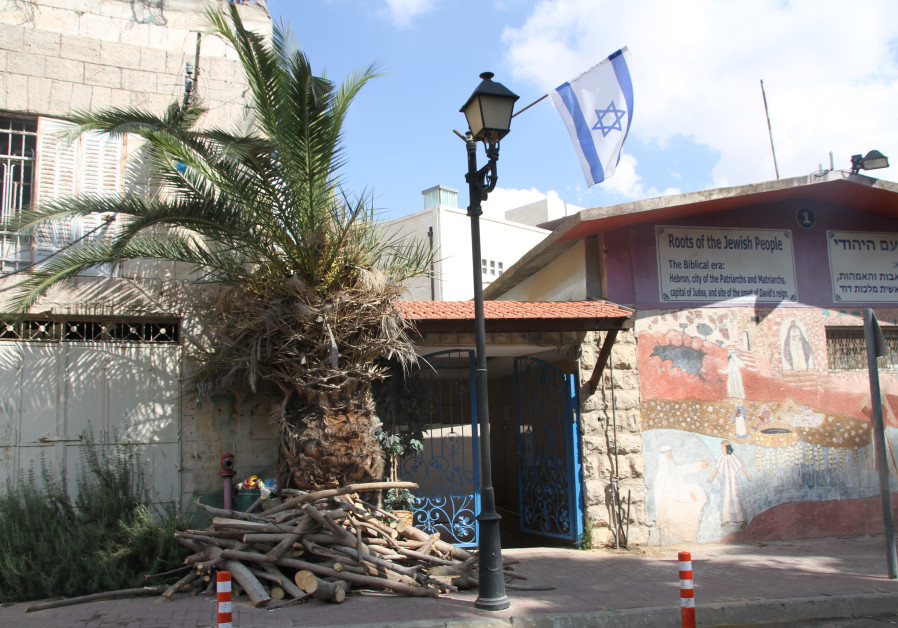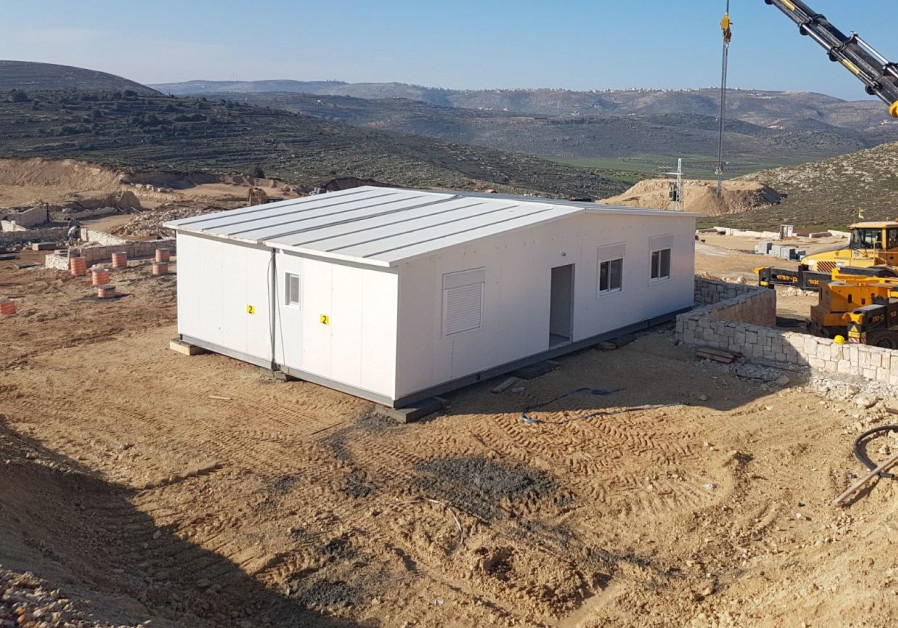Right-wing politicians advanced initiatives to authorize illegal settler building, including on private Palestinian property, as well as to legalize the outposts.
But they did not succeed in any of their drives to apply sovereignty or annex the West Bank. The Palestinians in turn registered a limited success on the issue of illegal home demotion, ending the year without the evacuation of either the Sussiya or Khan al-‘Ahmar herding villages.
The Boycott, Sanctions and Divestment movement claimed a significant victory when it swayed the global rental company Airbnb to declare its intention to boycott West Bank settlement listings. But the company found itself facing multiple lawsuits, both in Israel and the United States.
It was also a year when terror attacks swung from inside sovereign Israel to the West Bank. With the exception of two attacks, all Palestinian violence against Israelis took place in Judea and Samaria.
Five Highs
1 - US erases the Green Line in its diplomatic handling of Area C of the West Bank.
In one of the more dramatic turnarounds in America's handling of the Israeli-Palestinian conflict, the Trump administration erased the pre-1967 line – known as the "Green Line" – when it came to its handling of affairs in Area C of the West Bank and east Jerusalem. Area C, comprising some 60% of the West Bank, is home to all of its Jewish settlements and is under total Israeli military and civilian control.
Prior to 2018, the person holding the post of US ambassador to Israel made no formal or informal visits to West Bank settlements, or to Area C in general. Areas A, B and C of the West Bank, as well as east Jerusalem, were considered to be under the auspices of the east Jerusalem consulate. Its staff handled all matters relating to the West Bank, including visits, while the US Embassy in Tel Aviv was focused on sovereign Israel.
Upon his arrival in Israel in 2018, US Ambassador David Friedman crossed the Green Line and visited the Western Wall. He followed that in January with a private visit to the home of MK Yehuda Glick in the Otniel settlement, to offer his condolences to the politician who was mourning his wife’s death. Over the summer, Friedman also paid an official condolence call in the Adam settlement to the family of Yotam Ovadia, the 31-year-old father of two who was stabbed to death in a terror attack on the street in front of his home.
That was followed by a formal visit by Friedman in October to the Ariel settlement to speak at the Judea and Samaria Chamber of Commerce and Industry. The Trump administration then announced plans to shut down the east Jerusalem consulate by the end of the year, thereby merging it with the US embassy in Jerusalem. The move cut the direct line between the Palestinian Authority and Washington, thereby forcing all communication to go thought a newly formed Palestinian Affairs Unit, to the ambassador and then to Washington.
2 - US stops criticizing settlement building, but speaks of two states


The Trump administration did not roll out its peace plan as expected in 2018, but it opened the door to the possibility that it could include a two-state resolution to the conflict.
In September 2018, Trump told reporters: “I think we are going to go down the two-state road.”
Education Minister Naftali Bennett told Army Radio in December that he believed that the Trump peace plan involved a two-state resolution.
But at the same time, the administration stopped criticizing Israeli settlement activity. In response to all queries about Jewish building in Judea and Samaria, it issued the following statement: “The Israeli government has made clear that, going forward, its intent is to adopt a policy regarding settlement activity that takes the president’s concerns into consideration,” adding that: “The United States welcomes this.”
3 - Advancements in the legalization of settler homes, outposts


The Settlement Regulation Law, designed to retroactively legalize some 4,000 illegal settler buildings on private Palestinian property, remained frozen in 2018 as the High Court of Justice adjudicated its legality.
But Attorney-General Avichai Mandelblit, who refused to support the law, gave his blessing this year to a more narrow understanding by which about half of the homes could be legalized. He agreed to apply to Area C of the West Bank the principle of “good faith” used in market regulation by which illegally built homes within sovereign Israel can be authorized.
It’s part of the legal revolution led by Justice Minister Ayelet Shaked that began last year: to undermine the judicial understanding set out in the 1979 High Court of Justice Elon Moreh ruling that barred settlement building on private Palestinian property.
Prime Minister Benjamin Netanyahu, who in 2011 stated that all structures built on such private property must be removed, this month agreed to a new fast track process to legalize them when possible.
Specifically at issue are homes determined to be built on private Palestinian property as a result of new investigatory work by the Civil Administration to properly classify land in Area C of the West Bank.
Separately, the Knesset this month gave preliminary approval to legislation that would legalize West Bank outposts on state land, turning them into new settlements or new neighborhoods of existing settlements. The move is one of a number of steps designed to deal with the outposts as fledgling communities on the path to legalization rather than as illegally created communities that must be removed.
The Knesset also approved a law transferring West Bank land cases from the High Court to the administrative courts, by expanding their ability to hear legal cases outside of the judicial purview of sovereign Israel. Opponents of the bill argued that it limited Palestinian access to the High Court while its proponents said that the new law ensured that property rights were fairly adjudicated.
4 - Hebron’s Jewish community receives a boost in 2018


Hebron’s Jewish community chalked up a number of successes in 2018, particularly with regard to Jewish development on Shuhadah Street, which links the Cave of the Patriarchs with Beit Hadassah.
The Civil Administration granted permission for Jewish families to move into two buildings on the street, known as Beit Rachel and Beit Leah, after Hebron’s Jewish community claimed to have purchased the properties from their Palestinian owners.
The government green-lighted the construction of 31 homes on Shuhadah Street, the first new Jewish construction project in Hebron in 16 years, by approving NIS 22 million for the project. The new apartment complex, known as the Hezkiyahu Quarter, will be located next to the Hebron Yeshiva and will include some of the property that had been used by the IDF military base Plugat Hamitkanim.
Defense Minister Avigdor Liberman then announced that he planned to approve construction of a new building in the Jewish Avraham Avinu neighborhood of Hebron, where a block of empty Palestinian market stalls is located. Both projects are on land owned by Jews that had been transferred to the Custodian of Abandoned Properties and leased to Palestinians. And both are dependent on a new legal understanding that their Palestinian lease did not prevent Jewish use of the property.
A new archeological park was opened in the Tel Rumeida neighborhood of Hebron, which focuses on artifacts from the Bronze Age to the early Roman and the First Temple periods.
5 - Families move into Amichai settlement, Gilad Farm authorized


Settlers moved into the new modular homes that had been set up in the Amichai settlement in March of this year. The government had approved the community’s construction the previous year, marking the first time in 25 years that an entirely new settlement has been created.
In February, the transformation of the Gilad Farm outpost into a new settlement, either at its current location or at a nearby location, was approved. Some ten months later, however, the decision has yet to be implemented.
Five Lows
1 -
Arrbnb boycotts settlement listing; Ireland advances legislation to criminalize settlement activity
In a significant victory for the Boycott, Divestment and Sanctions movement, the popular global vacation rental company posted a notice on its website that it would no longer list properties in West Bank settlements.
But the move also tested the strength of BDS opponents, prompting an immediate public backlash. Lawsuits were filed against the company in Israel and the US. The move also placed it at risk for running afoul of laws in 26 US states against BDS.
The Airbnb policy decision was only partially implemented, as it is still possible to find such listings on its website. The company’s head of Global Policy and Public Affairs Chris Lehane took the unusual step of visiting the West Bank's settler-run Barkan Industrial Park, which employs both Israelis and Palestinians. He also met there with Samaria Regional Council leader Yossi Dagan. At the end of his visit, Airbnb renounced BDS, but did not remove its policy statement against the settlements from its website.
Separately, the Irish senate this month passed legislation that would criminalize settlement activity. The bill has now moved to the parliament’s lower house for approval.
2 - Homes in Netiv Ha'avot, Tapuach West outposts demolished
The IDF in June removed 15 permanent homes on a portion of the Netiv Ha’avot outpost in the Gush Etzion region of the West Bank. Hundreds of right-wing activists, mostly teens, spent the day on the outpost protesting the demolition and clashing with security forces.
That same month it also demolished 11 modular structures in the Tapuach West outpost, five of which were inhabited.
Both demolitions took place after the High Court of Justice ruled that the structures were built on private Palestinian property and must be removed.
3 - Sussiya and Khan al-Ahmar still standing, demolitions of illegal Palestinian structures down
The right-wing failed to sway the IDF or the government to remove the two unauthorized Palestinian and Bedouin herding villages of Khan al-Ahmar and Sussiya.
During 2018, the village of Khan al-Ahmar came to symbolize Palestinian resistance against Israel’s military rule of the West Bank and the call for Palestinian statehood at the '67 line.
The High Court ruled over the summer that Khan al-Ahmar could be forcibly relocated. It was then presumed that the IDF would evacuate the encampment of tents and modular homes next to the Kfar Adumim settlement.
ICC prosecutor Fatou Bensouda then warned Netanyahu that the village’s forced relocation could constitute a war crime. The demolition was then suspended, although the prime minister has continued to insist that the village will be recreated.
The demolition of the unauthorized Palestinian village of Sussiya was similarly suspended prior to the ICC statement.
The overall number of demolitions in 2018 was low compared to 2016, when 904 structures were destroyed and 1,347 people were rendered homeless, according to UN data. In 2018, 283 structures were demolished and 296 people were displaced in the West Bank. According to the UN, there are 13,000 pending home demolition orders against Palestinian and Bedouin structures in the West Bank.
4 - Increase in fatal Palestinian West Bank attacks against Israelis
According to data from the Foreign Ministry, there were 11 incidents of Palestinian violence against Israelis in 2018 that resulted in 14 fatalities. Nine of the attacks and 12 of the deaths occurred in the West Bank.
For 2017, the ministry listed 11 incidents with 18 fatalities; three of the incidents, resulting in 7 deaths, occurred in the West Bank.
The fatalities include: Rabbi Raziel Shevach, Rabbi Itamar Ben-Gal, Captain Ziv Daus, Sergeant Netanel Kahalani, Adiel Kolman, IDF Staff-Sergeant Ronen Lubarsky, Yotam Ovadia, Ari Fuld, Kim Levengrond-Yehezkel, Ziv Hajbi, Mahmoud Abu Asba, prematurely born infant Amiad Israel Ish-Ran, Staff-Sergeant Yuval Mor Yosef and Sergeant Yoseph Cohen.
This included the attack in the Gush Etzion Junction, the Barkan Industrial Park, a ramming attack near Mevo Dotan in Samaria, and the Ofra and Givat Assaf bus stops.
5 - Extreme right-wing violence by Israelis against Palestinians in West Bank
Police suspect that Israeli stone throwers were responsible for the death of Aisha Mohammed Rabi, who was fatally injured in October when she was hit in the head while driving with her husband on a road near Nablus.
According to the United Nations, Israelis vandalized 7,900 Palestinian trees in the West Bank and damaged 540 vehicles.Edited by Natan RothsteinRead all of the year's top highlights and lowlights:IDF | Palestinians | Legal system | Politics | Economy | American politics & relations | Diplomacy | Religion | Culture
